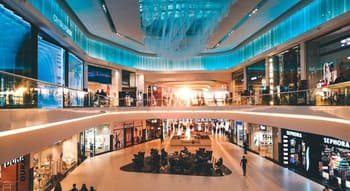In Short
-
Managing a sustainable supply chain helps businesses become more climate-conscious and comply with regulatory obligations.
-
Proactive strategies, such as setting long-term sustainability goals and requiring suppliers to do the same, can help manage your business’s environmental impact.
-
A strong supply chain sustainability plan can improve brand reputation and increase market competitiveness.
Tips for Businesses
Develop clear sustainability goals and ensure your suppliers are aligned with these objectives. Regularly assess your business model, taking into account both environmental and social impacts. Implementing a sustainable supply chain can help mitigate the effects of climate change while enhancing your brand’s credibility in the marketplace.
The effects of climate change are becoming increasingly pervasive across the environment, the economy and life in the present era. Businesses must now adjust to new market pressures, and companies have to be responsive to how climate change has affected both shareholder interests and the discharge of directors duties. Environmental factors have become interwoven with good corporate social governance. This article will explain how you can take active steps to becoming a ‘climate-conscious’ business by administering a sustainable supply chain.
What is a Supply Chain?
A supply chain is the system of organisations, individuals and processes that your business uses when supplying its products or services to the end-consumer. Common components of a business’ supply chain include its:
- materials;
- suppliers;
- manufacturers;
- distributors; and
- employees.
What to Look Out For In Your Supply Chain
When inspecting your business’ supply chain, you might first consider whether your business has to uphold any specific industry regulations.
However, your business’ response to climate change should not necessarily be entirely determined by particular regulatory obligations. Instead, an increasing number of businesses are taking corporate social responsibility into their own hands, scrutinizing their own supply chain and business methods to make sure their sustainability practices are up to scratch.
When undertaking due diligence on your business model, you might ask whether:
- the people and organisations in your supply chain are compliant with their respective regulatory and compliance obligations;
- you would be comfortable if your clients and end consumers knew about every aspect of your supply chain;
- your business actively contributes to reducing the impacts of climate change;
- any of the components in your supply chain are particularly susceptible to the physical risks of climate change (e.g. drought, floods and fires);
- any of the components in your supply chain are particularly susceptible to the transitional risks of climate change (e.g. the move away from non-renewable resources).
Best Practices When Modelling Your Supply Chain
The best way to ensure that your company has an effective climate policy throughout its business model is to take a proactive, rather than reactive, approach. There are a number of common strategies that organisations with effective environmental and social governance principles demonstrate to effectively manage their supply chain and their overall impact as a business. Your organisation should:
- have established long-term sustainability goals that underpin your decision making;
- require suppliers to also maintain their own long-term sustainability goals;
- include sustainability outcomes as performance obligations within key contracts;
- appoint key staff within the business to manage and monitor these sustainability goals; and
- take guidance and direction from leading organisations both inside and outside your industry.
Supply Chain Sustainability in Action
Consider the below example of supply chain sustainability.
Molly has been running a small furniture manufacturing business. After a year of trading, her business is growing, such that she has the opportunity to expand the volume and type of furniture that she makes.
In re-evaluating her current business model, Molly realises that she has room to improve on the sustainability of her supply chain. She realises that the wood that she uses in most of her manufacturing is not sustainably sourced. It is supplied to her by a large overseas business that is contributing to mass deforestation internationally.
Molly decides to replace this international supplier with a local timber business. Whilst the cost of raw materials is slightly more expensive, this new timber business has an impressive reforestation scheme, and Molly discovers that the wood is far better quality. Molly increases costs on her products, which she finds that her customers are happy to pay given that she is now producing better quality and locally sourced products. As well as retaining her profit margin, Molly successfully uses her reworked sustainable supply chain as a marketing selling point which further strengthens her growing enterprise.
Key Takeaways
As climate change continues to become one of the key issues of the modern era, all sectors of the economy are facing increased expectations to reduce their environmental impact. In order to respond to these market pressures, businesses are implementing a higher degree of scrutiny when assessing the sustainability of their supply chain. If you would like to discuss the implementation of sustainability outcomes in any of your commercial contracts, contact LegalVision’s business lawyers on 1300 544 755 or fill out the form on this page.
Frequently Asked Questions
What is a supply chain?
A supply chain refers to the system of organisations, individuals, and processes involved in delivering products or services to the end consumer. It includes materials, suppliers, manufacturers, distributors, and employees.
What should I look for in my supply chain when responding to climate change?
You should evaluate whether the entities in your supply chain comply with relevant regulations, their environmental impact, and their vulnerability to climate change risks, such as physical or transitional risks.
We appreciate your feedback – your submission has been successfully received.











